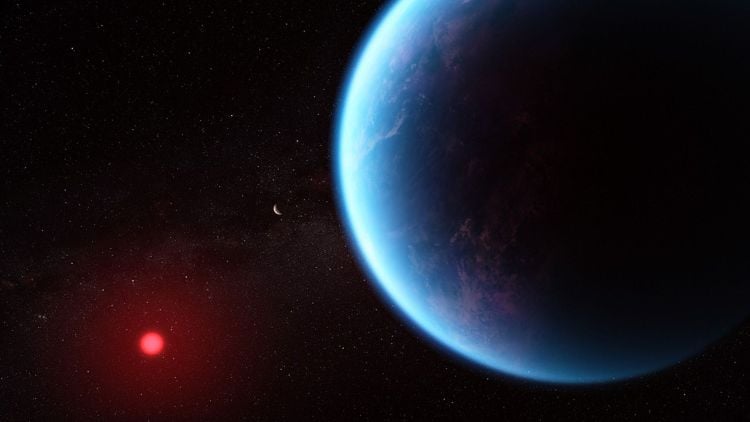Research published in the journal Nature has unveiled critical insights into the formation of liquid water on exoplanets, which may enhance the search for extraterrestrial life. An international team of scientists conducted extensive laboratory experiments to understand how interactions between atmospheric hydrogen and molten rock can lead to water production under extreme conditions, akin to those found on distant worlds.
The study involved a series of laser experiments using a diamond anvil cell, simulating the high temperatures of approximately 4000 K (about 3,727 degrees Celsius or 6,740 degrees Fahrenheit) and pressures ranging from 16 to 60 gigapascals (GPa). These conditions mimic the environments of exoplanets, particularly the interaction between a hydrogen-rich atmosphere and an iron-rich magma ocean underneath.
The researchers discovered that when a magma ocean contains significant levels of hydrogen, coupled with the reduction of iron oxide (the removal of oxygen leading to the formation of solid iron), substantial amounts of water are produced. This finding supports existing theories on planetary formation and evolution, suggesting that the presence of liquid water is a natural outcome of these processes.
Dr. Anat Shahar, a Staff Scientist and Deputy for Research Advancement at the Carnegie Institution for Science, emphasized the importance of these findings: “The presence of liquid water is considered critical for planetary habitability. This work demonstrates that large quantities of water are created as a natural consequence of planet formation. It represents a major step forward in how we think about the search for distant worlds capable of hosting life.”
The research highlights the potential of a specific category of exoplanets known as sub-Neptunes. These planets, which have masses between Earth and Neptune, possess rocky interiors similar to Earth and hydrogen-heavy atmospheres akin to Neptune. While this combination is not present in our solar system, astronomers have identified nearly 1,000 sub-Neptunes among the more than 6,000 confirmed exoplanets to date.
Some sub-Neptunes are classified as super-Earths when their mass and radius lean more toward those of Earth. Notable examples include K2-18 b, Kepler-138 d, and TOI-270 d, located approximately 124 light-years, 218 light-years, and 73 light-years from Earth, respectively. All these exoplanets orbit M-dwarf stars, which are smaller and cooler than our Sun. Consequently, their habitable zones are also smaller, yet M-dwarf stars have significantly longer lifetimes, estimated in the range of trillions of years, compared to our Sun’s lifespan of about 10 billion years.
The implications of this research are profound. While astronomers traditionally focused on identifying exoplanets closely resembling Earth, the findings suggest that planets with distinct characteristics from our solar system could also harbor conditions conducive to life. This challenges existing paradigms and opens new avenues for exploration.
As scientists continue to unravel the complexities of water production on exoplanets, future research may yield even more groundbreaking insights into the conditions necessary for life beyond Earth. The quest to understand our universe’s diversity is ongoing, and studies like this underscore the importance of adapting our search criteria in the pursuit of extraterrestrial life.
